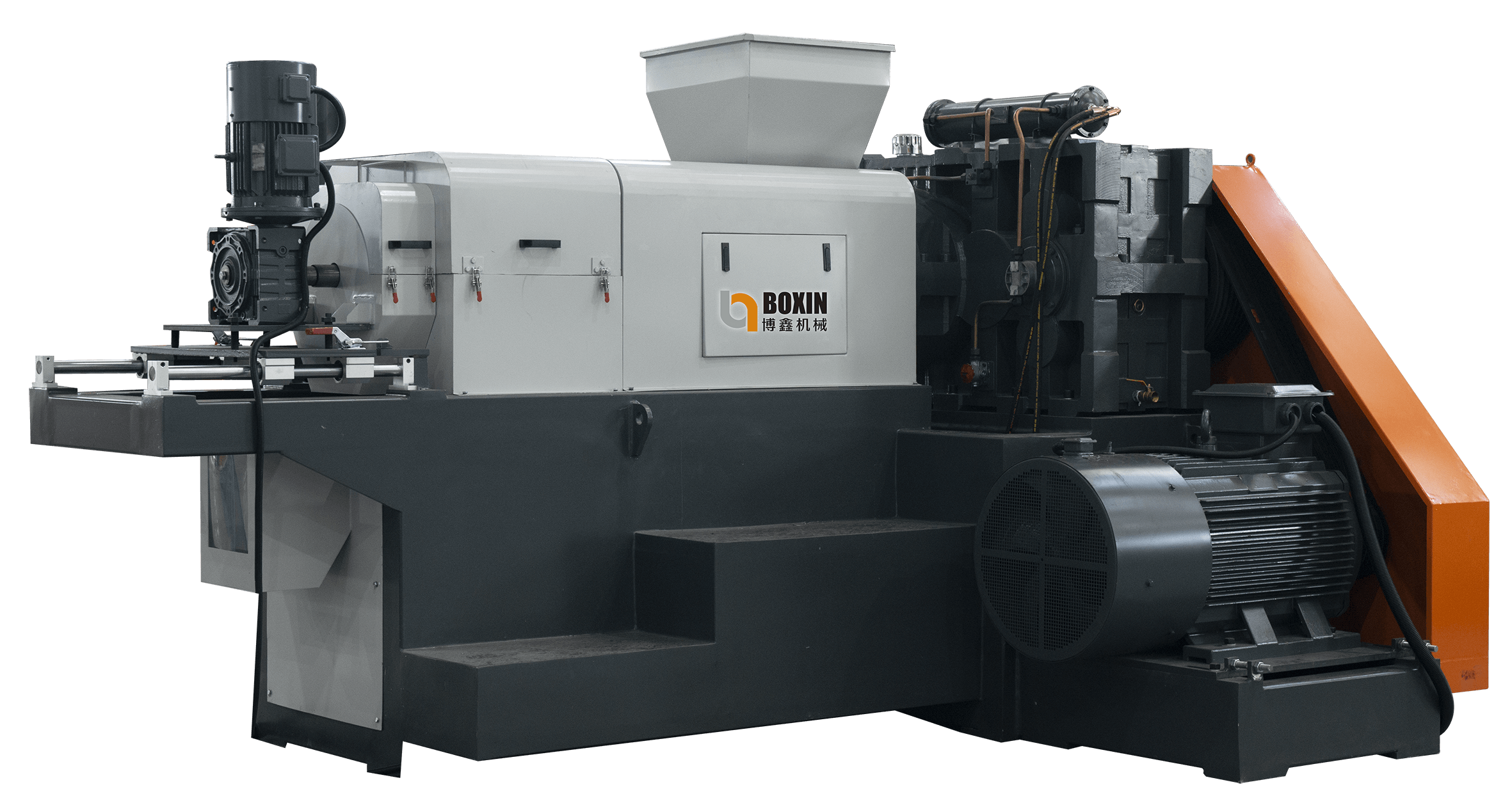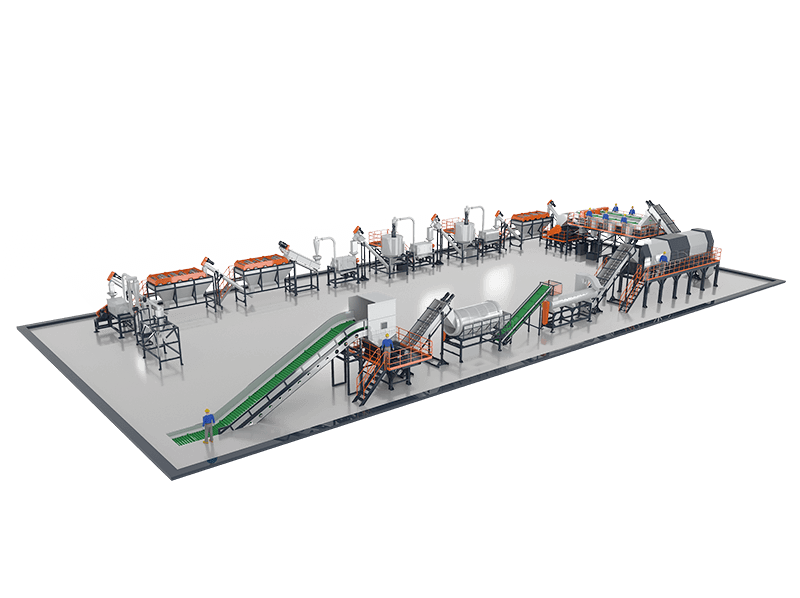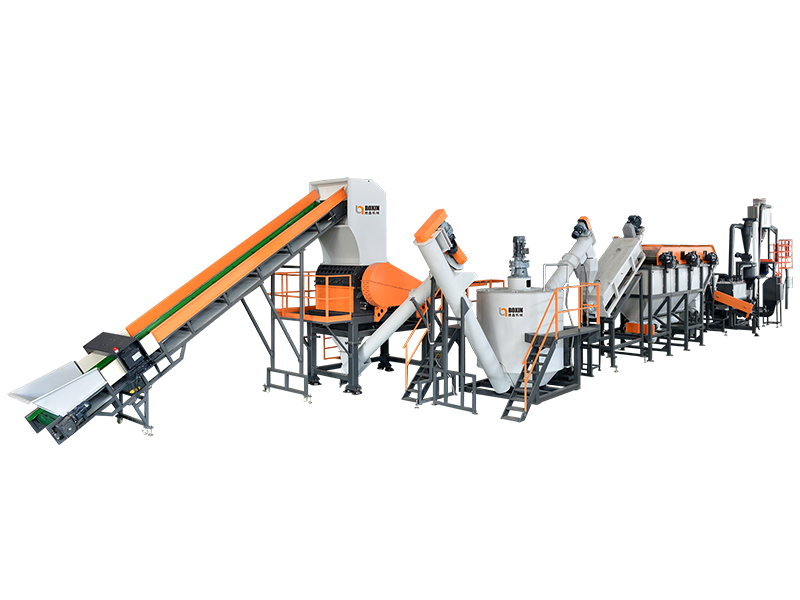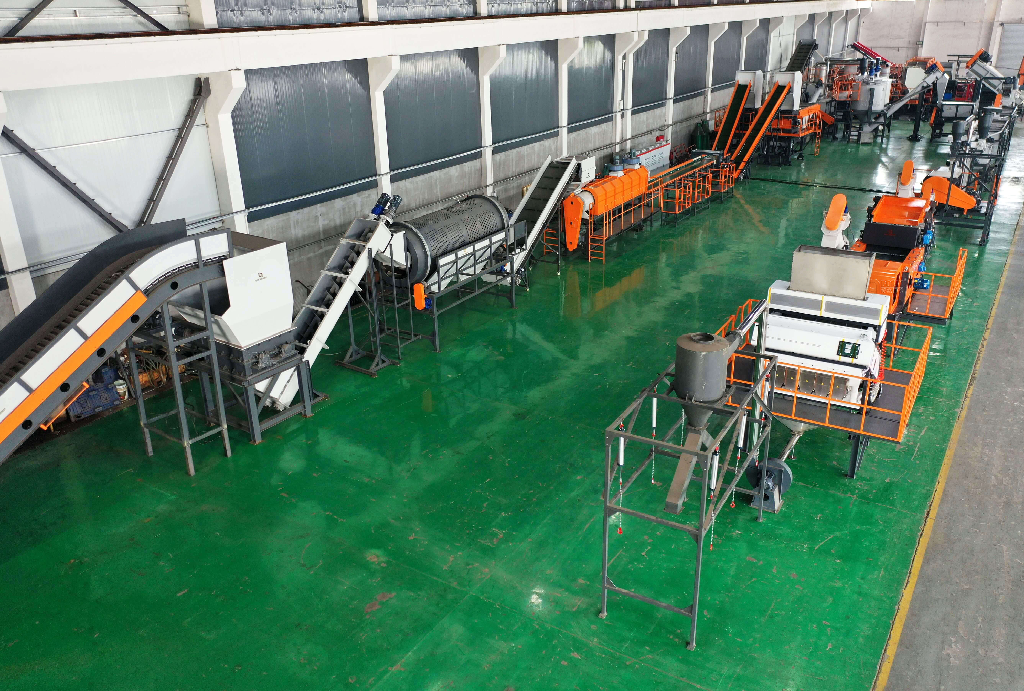What is a PE Film Plastic Washing Squeezer Pellet Machine?
A PE film plastic washing squeezer pellet machine (sometimes also called a film squeezing dryer, squeezing pelletizer, or screw compactor) addresses a key problem in plastic recycling: wet plastic film is bulky, difficult to store, and with high moisture content it is not suitable to be fed directly into an extruder for final pelletizing.
In fact, this machine performs two functions at the same time:
-
Dewatering: It removes water mechanically, similar to a powerful wringer or press. The squeezer pellet machine can reduce the moisture content to around 2–5% (often 2–3%), reaching the dryness required for extrusion.
-
Densification (Agglomeration): Wet film has very low bulk density (fluffy and airy). The squeezer uses frictional heat and pressure to lightly melt the surface of the plastic, making the film flakes compact and fused into denser pellets. The output looks like irregular plastic pellets or chunks. They are not as uniform as final plastic pellets, but they are dense and free-flowing enough to be conveyed and melted in a standard pelletizing extruder.
Why is this needed?
In a typical plastic film recycling line (for LDPE, LLDPE, HDPE films, or PP woven bags), after shredding and washing, the material must be dried before it can be melted and extruded into new pellets. Traditional methods include:
-
Centrifugal drying (spin dryers) to remove water,
-
Thermal drying using hot air or heating elements to evaporate residual water,
-
Agglomerators (compactors) using friction to heat and fuse wet film into lumps.
The PE film squeezer pellet machine effectively integrates and simplifies these steps. It replaces the separate drying and agglomeration processes with one continuous operation. This saves energy and labor — mechanical squeezing is more energy-efficient than evaporating water with heat, and combining multiple steps reduces the number of machines (and operators) required.
Working Principle of the Squeezer Pellet Machine
This machine operates in a fully automatic continuous process, combining mechanical squeezing with controlled heating. Below is a step-by-step overview of how wet plastic film enters the machine and is finally discharged as dry pellets:
|
|
|
|
|
Feeding Wet Plastic Film:
Washed plastic film flakes or strips (from the previous washing process) are fed into the machine’s hopper. This can be done via a conveyor belt or directly from the washing line outlet. Many systems use inclined screw conveyors or belt feeders to deliver material at a steady rate. Uniform feeding is important to prevent overloading or underfeeding.
The films can be of various types—LDPE packaging film, greenhouse film, LLDPE stretch film, HDPE bags, even PP woven bags and nonwoven sack materials—provided they are washed and roughly cut into small pieces. The feeding system usually includes compressing or tensioning devices to ensure lightweight film enters smoothly into the screw without bridging or tangling. This design solves a common challenge: loose films are often difficult to feed, but modern squeezers are engineered to guide them evenly into the extruder screw.
|
Squeezing and Dewatering:
Once inside the screw squeezing chamber, a powerful single-screw extrusion system takes over. The screw, like a giant spiral drill, rotates within a tight barrel. As it turns, it conveys the plastic forward through the barrel while applying increasing pressure. At the start, it grips and compacts the wet film; further along, the barrel narrows (or the screw design changes), squeezing the material more strongly. Moisture inside the washed plastic is forced out under pressure. This barrel section is often perforated or fitted with drainage slots to allow water to escape. Imagine wringing out a wet sponge—the screw is squeezing water out of the plastic. The expelled water drains through outlets, usually holes or slots, into a collection tray or pipe. By the end of this squeezing stage, the plastic is mostly dewatered. Mechanical squeezing is highly efficient: an optimized squeezer can remove most of the water, reducing moisture content to just a few percent. Importantly, the process does not rely on hot air drying, so energy consumption is far lower than thermal drying.
|
Heating and Densification (Friction and Compression):
As the screw continues pushing the material forward, the plastic undergoes intense friction and pressure. This friction generates internal heat, and many machines also include barrel heating elements to maintain an optimal temperature. The goal of this controlled heating is not to fully melt the plastic but to soften it enough to bond together. The combination of pressure and heat causes the dry film flakes to agglomerate (fuse) into larger, denser pieces. By the time the material reaches the end of the screw, it has formed a semi-molten plastic mass. Think of this stage as a mild extrusion—the plastic is partially melted and densified. Because it is not fully molten, it does not flow like in a conventional extruder; instead, it emerges as flexible, dough-like lumps. This densification is crucial: fluffy film is transformed into compact granules. At this stage, any residual moisture is further reduced by heat. The design carefully balances temperature to evaporate water without degrading or burning the plastic. The target final moisture content is usually below 5%, often around 2–3%. Heating also helps the granules retain shape upon cooling.
|
Discharging Granular Material:
At the end of the barrel, the machine has an outlet die or opening, from which the hot, dense plastic exits. The die may be a small circular hole or a slot for material flow. As the plastic emerges, it may be cut by rotating blades or naturally break into chunks due to motion. Different manufacturers offer different discharge methods—some produce short strands that break into pellets, others form irregular plastic lumps. In all cases, the output is granular plastic. These granules are much denser and drier than the original film input.
|
Integration with Pelletizing Extruder (Post-Processing):
Although the squeezer output itself is in pellet-like form, in many recycling plants this material is immediately fed into a plastic pelletizing extruder for re-pelletizing.
The extruder completely melts the dense granules and pushes the molten plastic through precision dies, producing uniform pellets (commonly finalized with a water-ring pelletizer). Because the squeezer’s output is dry and compact, it can be continuously fed into the extruder without bridging or clogging.
Compared to feeding wet, fluffy films, extruder throughput can increase by up to 20%. In most cases, the squeezer pellet machine serves as an intermediate stage to prepare feedstock for the actual pelletizing line.
Automated Operation:
The entire process is controlled by an automated PLC system to maintain optimal conditions. Sensors monitor screw torque, motor load, temperature, and output rate. If feeding becomes uneven or an overload risk occurs, the system can adjust speed or alert the operator.
|
Industry Knowledge Extension :::
More information about PE Film Pellet Production Line
|
|
|
Key Components and Features of the Squeezer Pellet Machine
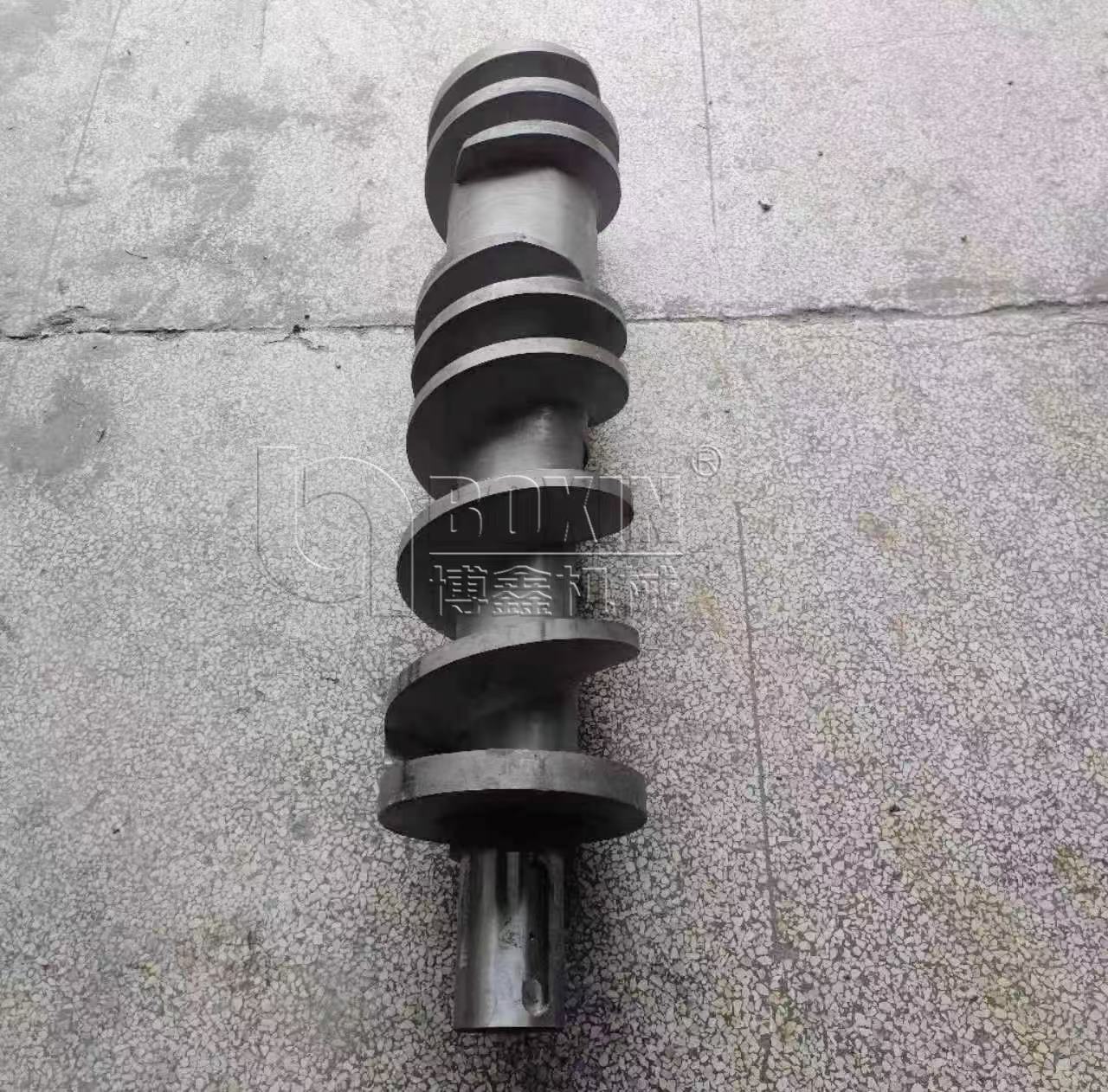 |
Heavy-Duty Screw and Barrel:
At the heart of the machine is the single-screw extrusion system. The screw is usually made from advanced wear-resistant alloy steel (e.g., 38CrMoAl), hardened and nitrided for durability. It must withstand high friction and potential contaminants (such as sand or grit remaining on films), making hardness and wear resistance essential. The screw design (thread depth, pitch, L/D ratio) is optimized for dewatering and melting plastic. Many machines use an L/D ratio of about 8:1 to 12:1—shorter than typical plasticizing extruders since the main role here is squeezing and agglomeration rather than full melting. The barrel surrounding the screw often features perforations or slotted screens for water discharge. It is also made of hardened steel, often with replaceable liners to extend service life. Together, the screw and barrel form the “squeezer,” handling both dewatering and heating. A tight clearance between screw and barrel is critical to maximize pressure on plastic and effectively squeeze out water.
|
Motor and Gearbox Drive:
The screw is driven by a powerful motor and a robust gearbox (reducer). Since high torque is required, motors are typically large: ~75 kW for smaller models, and up to 132 kW or even 160–250 kW for large-capacity machines (>1000 kg/h). The gearbox converts the motor’s high-speed, low-torque rotation into low-speed, high-torque screw rotation (usually 50–100 rpm). This drive system is the power source enabling the screw to exert immense pressure on plastics. Boxin Machinery equips its machines with overload protection on the motor drive and a Variable Frequency Drive (VFD) to control speed. The quality of the motor and gearbox impacts both performance and durability, so buyers should look for reputable brand components or proven specifications.
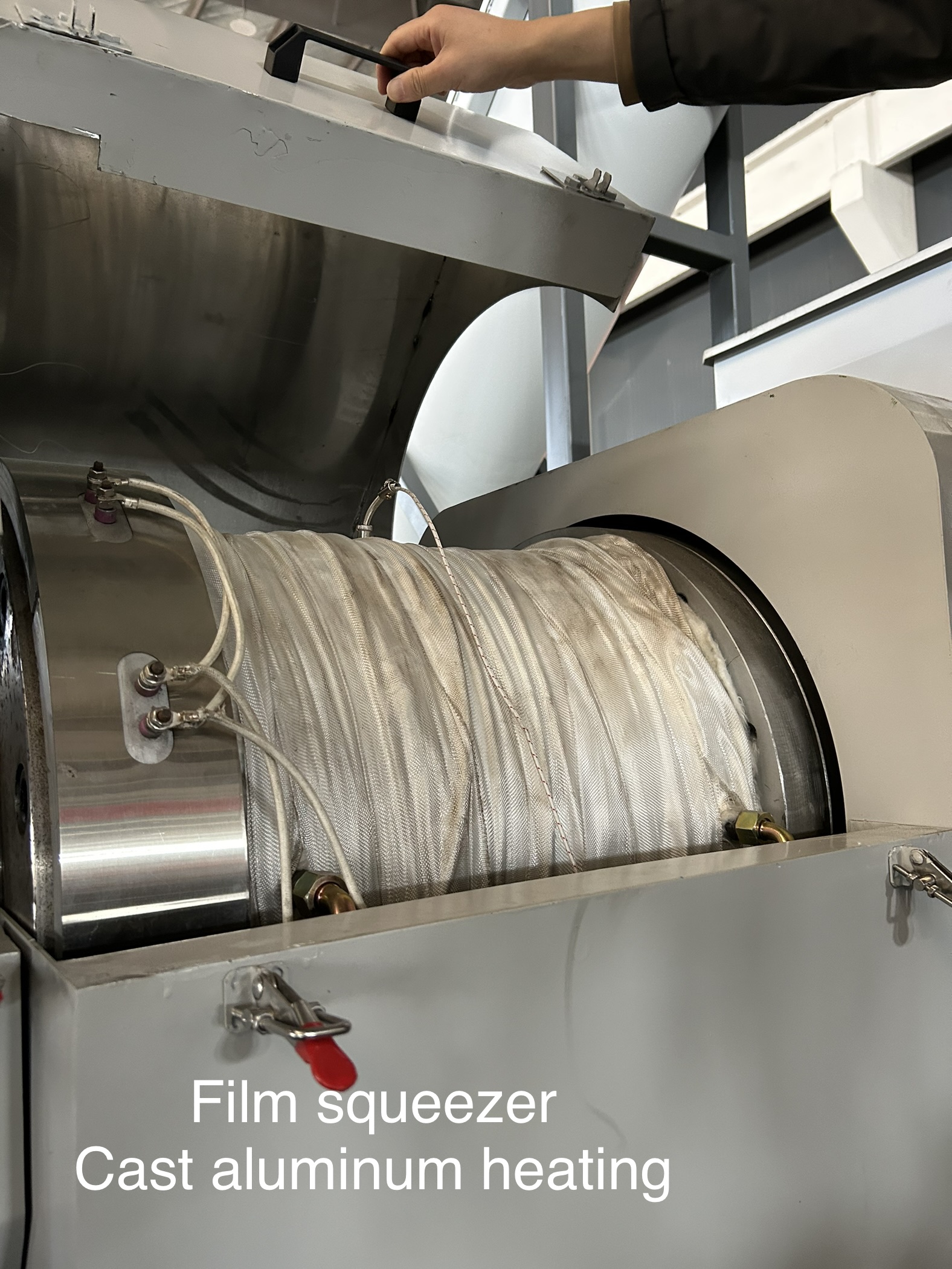 |
Heating System:
Although mechanical friction generates much of the necessary heat, squeezer pellet machines include auxiliary heating to stabilize temperature. This typically consists of electric heating bands wrapped around the barrel (especially near the discharge end) with thermocouples feeding data to the control system. The heaters are adjustable ceramic or cast aluminum types. Their role is to ensure plastic reaches the right temperature—soft enough to fuse, but not overheated to the point of degradation. Proper temperature control is crucial: too low, and plastic won’t densify; too high, and it may char or burn.
|
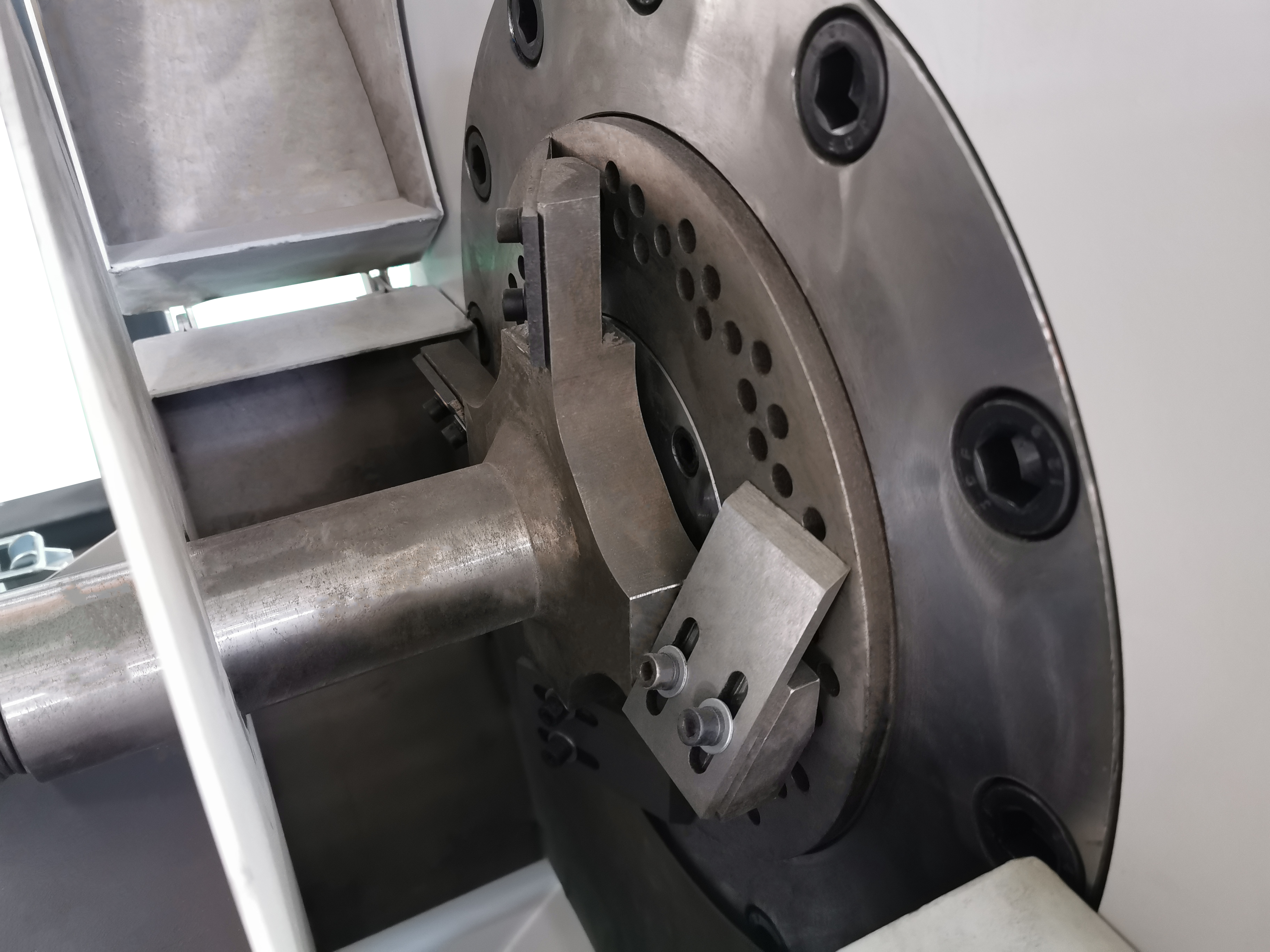 |
Drainage Mechanism:
A distinctive feature of these machines is the water discharge system. As noted, the barrel is often perforated or fitted with screens. When the screw squeezes water out, it must exit the machine. Usually, drainage ports or collection trays are placed below the squeezing zone. Water flows out by gravity (“free-fall drainage”) into a container or piping system for wastewater treatment. Some machines add hoppers or channels to guide water flow and prevent splashback. The simplicity of gravity drainage—without vacuum or suction—reduces moving parts and simplifies maintenance.
|
Granulation (Cutting) System:
Not all squeezer pellet machines have dedicated cutters, but some feature rotary blades at the discharge port. These can chop extruded plastic into smaller chunks at the outlet. Others rely on the semi-solid state and natural breakage of material into pieces. In machines designed for more uniform particle size, integrated cutters create more consistent granules. Still, even with cutters, the product is typically irregular chunks several centimeters in size, not precision pellets. If uniform pellets are needed, a separate pelletizer (in the next extrusion stage) is used. When comparing models, note whether a machine is marketed as a pure “squeezer dryer” or a “squeezer pelletizer”—the latter implies integrated cutting. Some designs extrude spaghetti-like strands that are then chopped by rotating knives, similar to strand pelletizing, but applied to hot, semi-molten output. These features influence granule shape and handling but fundamentally serve to break output into manageable parts.
Control Panel and PLC System:
Modern recycling equipment, including film squeezers, uses automated PLC (Programmable Logic Controller) systems. Operators control the machine via buttons or touchscreen on the panel. Key functions include:
-
Safe start/stop sequences (e.g., heaters preheat before screw start; screw only runs when conditions are met).
-
Temperature control (reading barrel heat and switching heaters on/off to maintain setpoints).
-
Load monitoring (displaying motor current or load to track performance; automatic feed adjustment if overload risk occurs).
-
Emergency stop and safety interlocks (standard on quality machines to stop operation immediately or prevent running with guards open).
-
Language and units customization (since many Chinese machines are exported globally, HMIs often allow English or other languages, and both metric/imperial units).
Frame and Structural Parts:
The machine is typically mounted on a heavy-duty steel frame to support the barrel, motor, and gearbox. Vibration and stress are significant, so structural rigidity is critical. Many designs are horizontal (screw placed horizontally), though some are inclined for feeding or drainage assistance. Any parts in contact with wet materials are stainless steel or treated for corrosion resistance—a valuable feature, since the mix of water, plastic, and steel can corrode equipment over time. Anti-rust treatments and replaceable liners help extend service life.
Price and Cost Considerations: How Much Does a Squeezer Pellet Machine Cost?
Typical Price Range:
For a standard film squeezer pellet machine, you can generally expect the following approximate figures (note: these are estimates and may vary depending on market conditions):
-
Small models (~300 kg/h): around USD $20,000 – $40,000
-
Medium models (~500–600 kg/h): usually USD $30,000 – $60,000
-
Large models (~1000 kg/h and above): typically USD $60,000 – $100,000+. For top-capacity machines (e.g., 1500 kg/h), the price can even exceed USD $120,000
The above ranges assume direct purchase from a China manufacturer, usually quoted as FOB (Free On Board) factory price—which does not include freight costs or import duties.
FAQ & Expert Tips: Most Common Buyer Questions
Straight Answers to the Questions You Might Be Hesitant to Ask
1. What is the main function of a PE film plastic washing, squeezing, and pelletizing machine?
Its main function is to dry and compact washed wet plastic film material. It reduces the moisture content to a very low level (around 2–5%) and compacts the fluffy film into dense pellets.
2. What types of plastic materials can this machine process?
These machines are designed for soft, thin plastics, such as:
Polyethylene (PE) films: LDPE, LLDPE, HDPE films, including packaging film, stretch film, shopping bags, agricultural film (e.g. greenhouse film or mulch film), etc.
Polypropylene (PP) woven and non-woven materials.
3. How dry are the processed plastic pellets? What is the achievable moisture content?
Typically, the residual moisture content of the output plastic pellets is below 5%.
4. Is this machine the same as a traditional densifier or agglomerator? What’s the difference?
They serve similar purposes (to densify plastic), but operate differently and are more advanced. Traditional agglomerators (densifiers) are usually standalone batch devices—a heated rotating drum with blades that melts plastic film and chops it into dense lumps. Although it also densifies material, it doesn’t actively squeeze out water; the material usually needs to be relatively dry for agglomeration, and any moisture evaporates as steam (which can sometimes be dangerous).
A squeezing pelletizer, on the other hand, is a screw-based continuous system: it physically squeezes out moisture while simultaneously pelletizing the plastic.
5. How do I choose the right model or capacity for my needs?
To choose the right model, consider the following:
Your input volume:
Material type:
Integration with other equipment:
Space and power availability:
Consult the manufacturer:
6. What maintenance is required for a squeezing pelletizer?
Daily/shift checks; lubrication; screw and barrel wear; heaters and electronics; cutting blades (if applicable); routine cleaning.
7. How much does a PE film squeezing pelletizer typically cost?
Prices may vary, but generally:
Smaller models (approx. 300 kg/h) cost around $20,000 to $40,000.
Mid-range models (500–600 kg/h) typically range from $40,000 to $60,000.
Larger high-capacity models (800–1000 kg/h and above) can cost $60,000 to $100,000 or more.
8. Can the machine be customized based on specific requirements?
Capacity adjustments; design modifications; different power specifications; materials and components; integrated solutions.

 EN
EN 
 English
English 简体中文
简体中文 Русский
Русский España
España عرب .
عرب .